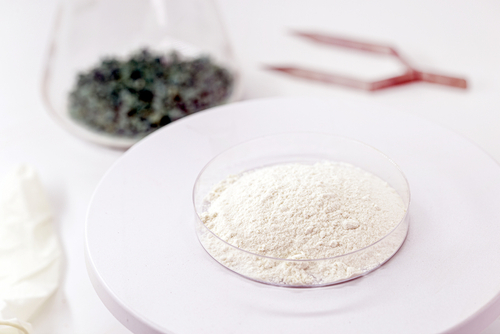
Why is aluminum oxide used in ceramics?
The application of Al2O3 is driven by manifold factors, including its inherent attributes and its ability to enhance the properties of ceramic materials. Let’s have a look at the most significant reasons behind this extensive use:
High melting point and refractoriness
Alumina is a compound that boasts an exceptionally high melting point, exceeding 3,600°F. This renders materials suitable for applications at extreme temperatures, such as furnaces, kilns, and aerospace components. Its refractoriness ensures the structural integrity of ceramics under intense heat.
Mechanical strength and hardness
The incorporation of Al2O3 significantly enhances ceramics’ mechanical strength and hardness. Alumina particles serve as reinforcing agents within the matrix, making the material resistant to wear, abrasion, and deformation. This is crucial in applications where the materials are subjected to mechanical stress, such as cutting tools, bearings, and armor.
Chemical inertness
Chemical inertness is essential in environments where the materials come into contact with corrosive substances or aggressive chemicals. Materials containing the compound are used in chemical processing, as protective coatings, and in laboratory equipment where resistance to chemical attack is imperative.
Electrical insulation
This compound is invaluable in electronic and electrical applications due to its excellent insulation properties. Ceramics that contain Al2O3 are used as insulators in electrical components, circuit boards, and high-voltage insulating materials. Their insulating properties prevent electrical leakage and ensure safety.
Thermal insulation
Alumina reinforced ceramics possess excellent thermal insulating properties, which are exploited in applications requiring heat retention or dissipation control. In industries like metallurgy and automotive, these insulators are employed to maintain desired temperature profiles in furnaces and exhaust systems.
Dimensional stability
Alumina contributes to the dimensional stability of materials. It helps minimize thermal expansion, ensuring that they retain their shape and structural integrity even when exposed to extreme temperature fluctuations. This property is crucial in precision engineering and high-precision instruments.
Biocompatibility and medical applications
In the medical field, biocompatible materials containing alumina find use in orthopedic and dental implants. Biocompatibility coupled with mechanical strength makes the compound a preferred choice for implants that need to withstand physiological stress while remaining compatible with the human body.
Optical transparency
The compound can be used to produce transparent ceramics, which are valuable in optics and photonics applications. These transparent materials have high optical clarity, making them suitable for lenses, windows, and specialized optical components.
Where can I find a reliable aluminum oxide ceramic company?

Our dedicated team of reliable, skilled, and knowledgeable specialists is always ready to listen to your needs and deliver optimal solutions. We operate both domestically and internationally and cater to the needs of versatile industries while adhering to the latest industry standards. Give us a call or send us an email at sales@wundermold.com and let us know how we can help.